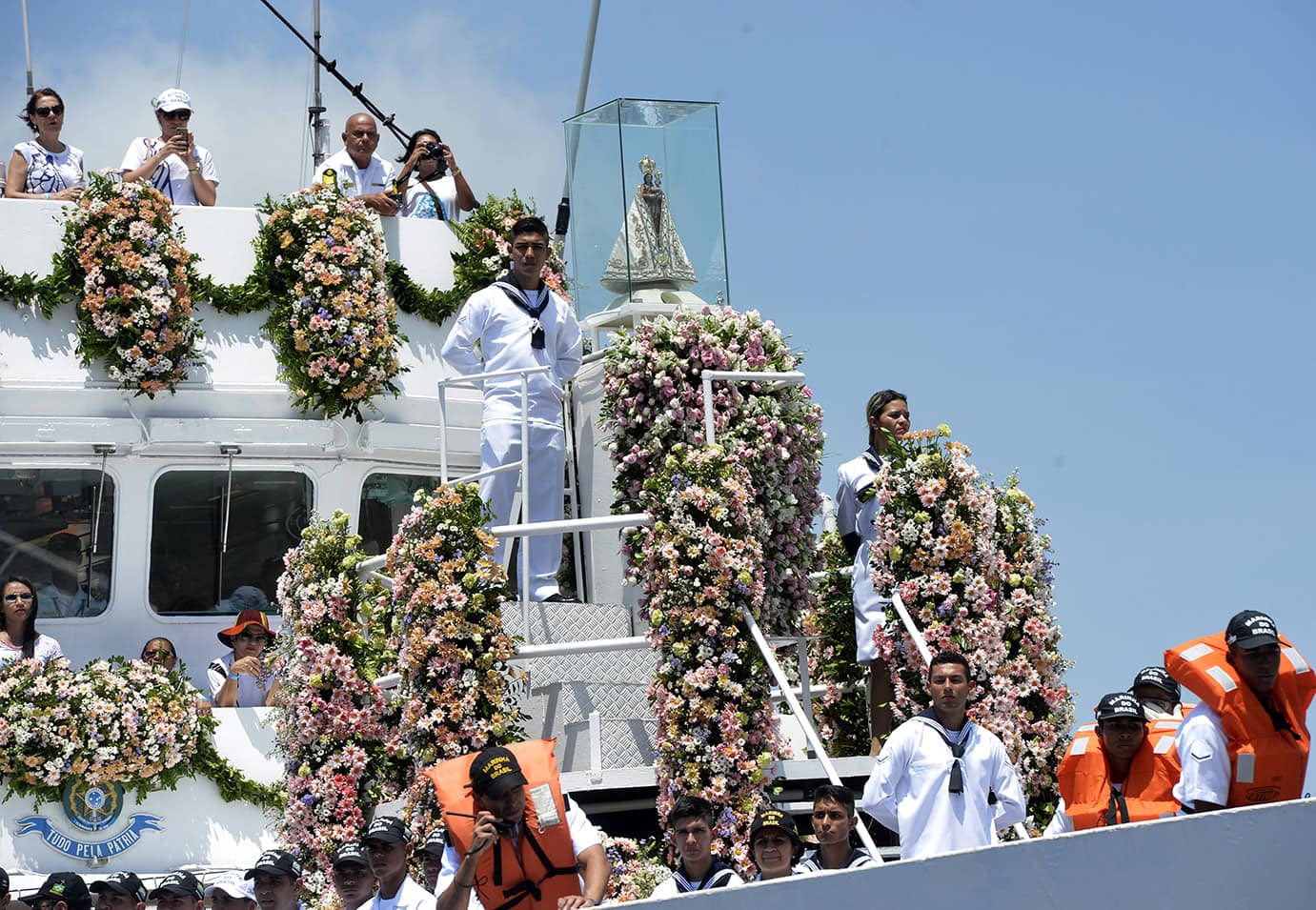Considered one of the largest religious celebrations in the world, it takes place every year in Belém, capital of the State of Pará, in the month of October, and attracts around 2 million faithful people to pay homage to Our Lady of Nazareth.
Cultural Heritage of Humanity by UNESCO, this festival lasts several days, characterized by the grandeur of the faith that moves people, and the energy involved in the city during the Círio. It is compared to Christmas in the state of Pará, as residents get together, celebrate, and have banquets after the celebrations with the typical foods of the place.
The festival is a procession where the pilgrim image of Our Lady of Nazaré, affectionately called Naza or Nazinha by her devotees, is taken from the Basilica (where it remains throughout the year) to the Praça Santuário de Nazaré. The Círio de Nazaré has several moments of tribute: the transfer, the first journey made by the image of the saint that follows on top of a car, from the Basilica of Nazaré to the Church of Nossa Senhora das Graças (main church), which is located in Ananindeua, neighboring municipality of Belém, remaining there overnight; the road pilgrimage, after the night vigil, the image of the saint goes to the village of Icoaraci, in Belém, and is accompanied by ambulances and cars belonging to official authorities.
Next, the river pilgrimage or Círio fluvial, where the image travels by boat through Guajará Bay, from Icoaraci to the port pier in the city of Belém, and is accompanied by canoes, Jet Skis, decorated boats and yachts; the motorbike pilgrimage takes place right after the river candle and the image departs from Estação das Docas, heading to Colégio Gentil Bittencourt, accompanied by a large number of decorated motorbikes, which with the sound of the horn announce the saint’s passage; the transfer, a procession that takes place the night before the Círio itself where the image is taken to the Sé Cathedral on a marble tied to a 400 meter rope, carried by people.

Finally, the highlight, the Círio de Nazaré procession. The route begins with the celebration of a mass and then the image of the saint is led by the archbishop to the seat, to follow the route to the basilica again. Many devotees form a human chain along the rope. Some go barefoot, others carry with them crucifixes, images of the saint and/or objects that are related to some grace achieved, as a form of gratitude or request. The saint is on display to the public for a week, in the sanctuary square.
Over the years, the Círio de Nazaré has grown in magnitude and significance, becoming a living testament to the rich spirituality and culture of the region. This celebration involves a series of events, rituals and demonstrations that attract pilgrims from all over the country, transforming Belém into a meeting point for Brazilian cultural and religious diversity. Faith intertwines with centuries-old traditions, creating a unique experience of devotion that echoes across generations.
When and where does it happen?
The Círio de Nazaré takes place annually in October, culminating on the second Sunday of the month. Belém, with its rich culture and spirituality, provides the perfect setting for this unique manifestation.
Source: Visit Brasil



